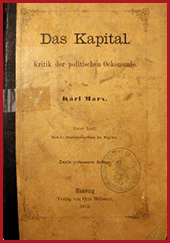Marx, Karl (Penguin Classics; Reprint edition, 1992, ISBN 978-0140445688)
In all probability, Marxist sport associations have existed for as long as universities have funded student clubs. After nine meetings over boiled lentils, a few may even have contrived to play their first games. However one communist cricket club in Melbourne, called ‘The Royal Park Reds’, has fielded teams for more than thirty years.
Amateur cricket clubs in Australia play on two types of pitches: turf and matting. The former refers to the type of pitch professionals use: prepared strips of grass cared for by groundskeepers (often at copious expense); the latter to a concrete pitch dressed on the day with Astroturf mats brought by the teams.
Founded in 1979, the Royal Park Reds started out playing on matting pitches within the North Suburban Cricket Association (NSCA). According to an old friend inside the club, at the annual meeting in 1985 a clique of members stunned the rest by contending that the time had come for the club to move up to turf pitches. In response, the others announced that they regarded playing on the expensive turf pitches as a bourgeois affectation. An act of treachery against the revolution.
The difference proved irreconcilable. In the end, the club fissured into two communist factions: the Reds, who now play on turf pitches in the nearby Mercantile Cricket Association, and the Royal Park Reds, who continue to bat for the class struggle on matting pitches within the NSCA.



That is a deeply flawed account of the split in the Royal Park Reds. The “clique” that left to play on turf actually comprised two of the three XIs of the club. The split emanated not from “turf v non-turf” but from longstanding differences over selection policy. The original members from 1979 (of which I was one) formed the core of the first XI and wanted form-based selection. The core members of the second XI who joined in 1980 wanted an anarchist-style “play in the side you prefer” policy. They characterised the first XI approach as elitism and meritocracy. We characterised the second XI approach as cliqueism and forcing some players to play out of their depth to indulge others.
The impulse to move to turf came after glowing reports from another club, Gunbower, who had switched from the NSCA to the Mercantile turf competition. The expense of turf cricket is hardly “bourgeois”. In current dollars, the average turf club has to raise $600 per player per season through fees and fundraising versus $250 for a non-turf club. We’re talking the cost of a tattoo, not a yacht or a skiing holiday here.
Thanks for this Alec! It is the account of a friend of mine, from a long time ago, as best as I can remember it. If you don’t mind, I’d love to write a follow-up piece presenting your information. If you’ve no objection, send me anything else you can remember and I’ll put it together and send it back to you for your comments (and corrections) before posting it.